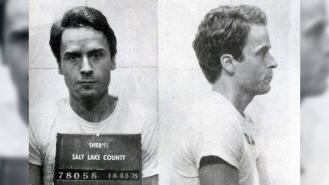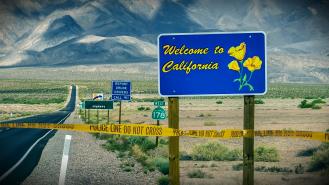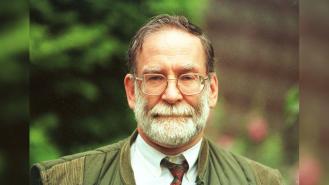
Did Ted Bundy help to catch the Green River Killer?
In 1991, cinema audiences were transfixed by the blockbuster thriller The Silence of the Lambs, in which an FBI agent hunting a serial killer, known as Buffalo Bill, gets help from another, incarcerated psychopath, Hannibal Lecter.
But few could have guessed that, years before the movie’s release, this bizarre dynamic had already played out for real. Instead of Buffalo Bill, the quarry was the elusive Green River Killer. And the real-life equivalent of Hannibal Lecter, providing detectives with insights from behind bars, was none other than Ted Bundy.
The search for a psychopath
In July 1982, two boys riding their bicycles by the Green River in Washington State, between the cities of Seattle and Tacoma, made a dreadful discovery. Snagged on the pilings beneath a bridge was the body of a woman, naked except for a pair of jeans tied around her neck. She was later identified as a teenage runaway who’d been scraping a living as a sex worker.
Several more bodies were soon found in the Green River. The victims had similar troubled backgrounds, and it was clear to detectives they were dealing with a serial killer who was targeting vulnerable, marginalised women. Many were linked to a stretch of highway that ran adjacent to Seattle’s Sea-Tac airport. Known simply as ‘the strip’ It was a place of notorious deprivation in the 1970s and 80s, scattered with strip clubs and rife with drug use and prostitution.
Cops staked out the strip, trying to identify which of the seemingly ordinary commuters, petty criminals and johns moving through the area was in fact a serial killer. Lists of suspects were drawn up, many of them being men known to have solicited the local girls for sex. But the much-needed breakthrough still never came.
A letter from Ted Bundy
In October 1984, the Green River Killer task force received a jaw-dropping letter from a death row prison cell in Florida. Its author was the notorious serial killer Ted Bundy, and he was offering his assistance in tracking the killer down. Investigators Robert Keppel (one of the men who’d hunted Bundy himself) and Dave Reichert were understandably wary of Bundy’s true agenda.
Was he simply seeking attention? Was he intrigued because many of his own killings had been committed in Washington, and Tacoma was his hometown? Ego seemed to play an obvious part in the offer of help. As Reichert later speculated, ‘I think he was jealous that the Green River Killer was grabbing all the headlines at the time. Ted Bundy was in prison, so he was sort of a forgotten entity.’
Keppel and Reichert decided they had nothing to lose and flew out to visit Bundy in person.
The killer’s insights
In their initial meeting, and in future correspondences with the investigators, the killer analysed the case in forensic detail and provided Keppel and Reichert with several accurate insights. For example, he was sceptical that one of the women found, Amina Agisheff, was a Green River Killer victim since she didn’t fit the killer’s usual target profile. This later proved to be correct.
Bundy rightly surmised that the killer was inoffensive and mild-mannered compared to many other men who’d mingle in the seedy environment of the Sea-Tac strip. Bundy also believed the killer weaponised his mild demeanour to lull the sex workers into a false sense of security. Bundy himself wore an arm cast or used crutches to make targets think he wasn’t a threat.
It later transpired the Green River Killer did indeed do this, showing photos of his son to make the women think he was a harmless family man.
Bundy also suggested that the Green River Killer would be drawn back to the places where he dumped the bodies. Despite the killer’s nickname, these were often dry locations like scrublands and foothills, allowing him to retain access to his grisly handiwork. ‘In my opinion,’ Bundy said, ‘the best chance you have of catching this guy red-handed is to get a site with a fresh body and stake it out.’
Bundy was going by his own habit of returning to where he’d buried his victims, to bask in his past glories and commit necrophilia. The Green River Killer later confessed to doing the same thing.
The killer unmasked
Some of Bundy’s ideas were less helpful than others. At one point, he suggested the investigators find a slasher film that hadn’t yet been released in the Pacific Northwest, have it shown in selected cinemas in Seattle and Tacoma, and monitor the men who turned up to watch it. ‘Now, I know this sounds weird,’ Bundy said, ‘but believe me it isn’t.’
Ultimately, while Bundy’s observations were often fascinating, and provided extra insights into his own mentality and crimes, they didn’t help catch the Green River Killer. The real breakthrough came in 2001, thanks to advances in DNA profiling. Detectives were finally able to match genetic material from victims’ bodies with a local truck painter named Gary Ridgway.
Ridgway was convicted of 49 murders, making him one of the most prolific serial killers in US history. He was every bit as nondescript and unassuming as Bundy had predicted, not that Bundy would ever know. He had been executed in 1989.








